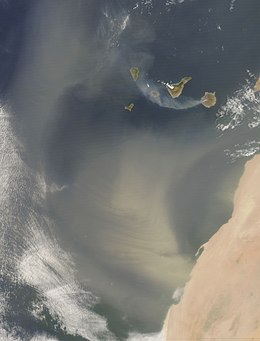
Back Sedimentvervoer Afrikaans Settetransport Estonian انتقال رسوب Persian סחופת HE Transpor sedimen ID 運搬作用 Japanese 유사 (수리학) Korean Sedimenttransport NB Sediment taşınması Turkish Транспортування відкладів Ukrainian

| Part of a series on |
| Sediments |
|---|
 |
Sediment transport is the movement of solid particles (sediment), typically due to a combination of gravity acting on the sediment, and the movement of the fluid in which the sediment is entrained. Sediment transport occurs in natural systems where the particles are clastic rocks (sand, gravel, boulders, etc.), mud, or clay; the fluid is air, water, or ice; and the force of gravity acts to move the particles along the sloping surface on which they are resting. Sediment transport due to fluid motion occurs in rivers, oceans, lakes, seas, and other bodies of water due to currents and tides. Transport is also caused by glaciers as they flow, and on terrestrial surfaces under the influence of wind. Sediment transport due only to gravity can occur on sloping surfaces in general, including hillslopes, scarps, cliffs, and the continental shelf—continental slope boundary.
Sediment transport is important in the fields of sedimentary geology, geomorphology, civil engineering, hydraulic engineering and environmental engineering (see applications, below). Knowledge of sediment transport is most often used to determine whether erosion or deposition will occur, the magnitude of this erosion or deposition, and the time and distance over which it will occur.